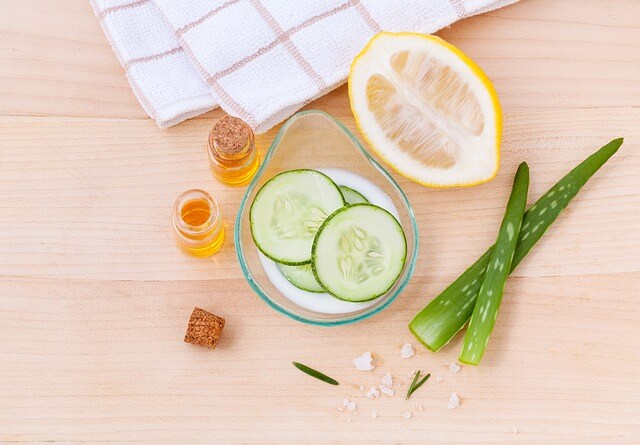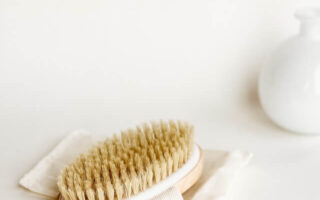Everyone knows toners are an essential part of a skincare regime. They cleanse, remove makeup and add hydration to your skin. But can they do more than cleansing and hydration?
Does toner exfoliate?
Are toner and exfoliator the same?
Let’s take a closer look.
What is toner?
A toner is a lotion or wash that can be used to cleanse your face and minimize the appearance of pores. Toner is not just water with a fancy label. Instead, it moisturizes, protects, and refreshes your skin.
What does a toner do?
A toner does more than cleanse and hydrate your skin. Adding a toner to your skincare regimen can help cleanse, tone, hydrate, brighten your complexion and improve the appearance of your pores.
Overall, the purpose of toner may be summed up as follows.
CLEANSING
For maximum benefits, every skincare routine follows a set order. The standard order is cleansing, exfoliation, serum, moisturizing, and sunscreen.
The key to obtaining the best results with toner is to apply toner after cleansing and exfoliating. Toner follows cleansing because it helps remove any residual dirt, makeup, or oil left behind by your cleanser. This ensures that your skin pores are clean and dirt-free before you go on to the next stage of your skincare routine.
FIX SKIN TONE & TEXTURE
A toner helps to even your skin tone and texture giving you a more radiant complexion. It cleanses excess oil, dirt, and impurities from your skin, preventing clogged pores and acne breakouts.
Toner is also useful for reducing the appearance of skin pores. Pores are tiny openings in your epidermis that can get clogged with dirt, oil, and impurities.
HYDRATION
Toners are humectant and help to restore and retain moisture in your skin. This is important because when your skin is properly hydrated, it looks and feels plumper, softer, and smoother. In addition, hydrated skin is less prone to wrinkles, fine lines, and other signs of aging.
RESTORING Ph BALANCE
The Ph level of your skin is a measure of its acidity. For example, your skin’s Ph level is naturally slightly acidic and ranges from 4.7 to 5.75. This acidity helps to protect your skin against harmful bacteria and keeps it healthy.
However, certain cleansers and exfoliants can disrupt your skin’s natural Ph balance, making it either too alkaline or too acidic. This can lead to dryness, irritation, and even acne breakouts. Toners help restore your skin’s natural Ph balance, keeping it healthy and happy.
Do Toners Exfoliate?
Yes, toners do exfoliate the skin. But not every toner contains exfoliating properties.
There are two types of toners available:
- Hydrating Toner
- Exfoliating Toner
Hydrating toners don’t have exfoliating properties. Their main purpose is to help your skin lock in moisture with ingredients such as hyaluronic acid and glycerin. They also aid in absorbing other skin care products, such as serums and lotions, which you apply afterward.
On the other hand, exfoliating toner contains chemical exfoliants such as AHAs, BHAs, PHAs, and LHAs. These exfoliants loosen the bonds that hold dead skin cells together, thus helping to slough away dead skin cells and unclog pores. This leaves your skin looking brighter and smoother.
Exfoliating toners are recommended for people with oily or acne-prone skin, as they can help to control sebum production and prevent breakouts.
Different types of chemical exfoliants found in exfoliating toners
Exfoliating toners contain a variety of chemical exfoliants, such as alpha hydroxy acids (AHAs), beta hydroxy acids (BHAs), polyhydroxy acids (PHAs), and lactobionic acids (LHAs).
AHAs, such as glycolic and lactic acid, effectively break down the bonds holding dead skin cells together to remove them easily. BHAs like salicylic acid is great for getting into pores and treating acne or blackheads since they can dissolve in oil. For a gentler exfoliation, try PHAs like gluconolactone, which diminishes fine lines and wrinkles, while LHAs – lactobionic acids specifically – provide an even newer option of exfoliant suitable for diminishing signs of aging due to sun damage.
How to use exfoliating toners safely and effectively?
Exfoliating toners should be applied cautiously, as they can cause irritation if used too frequently or in conjunction with multiple exfoliating products. It is recommended to start slow and use an exfoliating toner 1-2 times per week, gradually increasing the frequency depending on your skin’s reaction. Additionally, protect your skin from UV rays post-application since the exfoliation may make it more sensitive to sun exposure. Pay close attention to how your skin reacts and adjust accordingly for optimal results!
How do exfoliating toners compare to other types of exfoliants?
Exfoliating toners, unlike physical exfoliants like scrubs that utilize tiny particles to remove dead skin cells, are chemical exfoliants that work by breaking down the bonds between the discarded skin. These products are usually milder on your complexion and less likely to spark distress or bring about micro-tears than a scrub. Yet too much use or combination with other abrasive formulations can still cause dryness or inflammation.
Enzymes exfoliants, derived from natural sources such as papaya and pineapple, provide a gentle yet effective solution for sensitive skin. These cleansing agents break down the bonds between dead skin cells, allowing them to be easily washed away – just like chemical exfoliants. These enzymatic ingredients are safe and suitable for delicate complexions and work quickly and efficiently without irritating the skin’s surface.
In summary, toners can be a great addition to a skincare routine, but it’s important to understand the difference between toners and exfoliators and to use exfoliating toners with caution. Always start slowly and pay attention to your skin’s reaction to the product. By choosing the right exfoliating toner for your skin type and concerns and using it correctly, you can achieve brighter, smoother, healthier-looking skin.




